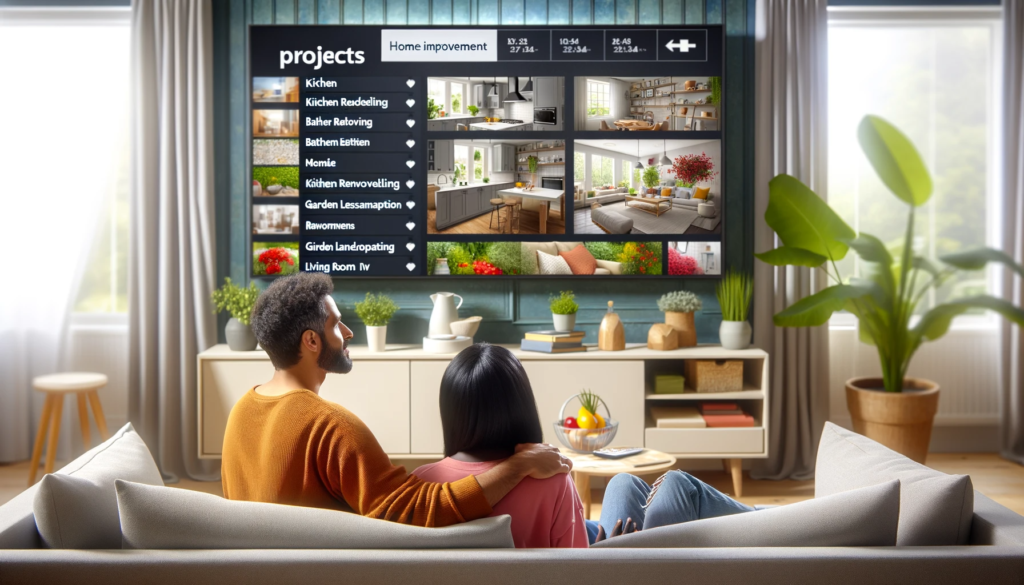The beginning of a new year is always an exciting time for homeowners. It’s a chance to set new goals and envision improvements for your living space. Whether you’re looking to enhance comfort, boost energy efficiency, or increase your home’s value, prioritizing your home improvement projects is crucial for a successful and organized approach. In this guide, we’ll walk you through a step-by-step process to help you prioritize your home improvement projects for 2024, so you can make the most of your investment and enjoy a beautiful and functional home.
Step 1: Assess Your Home’s Needs
Before diving into any projects, start by thoroughly assessing your home’s current condition. Walk through each room and make a list of areas that require attention. Consider factors like safety, functionality, and aesthetics. Are there any urgent repairs needed? Are there spaces that are underutilized? Take notes and prioritize based on immediate needs.
- Perform a room-by-room evaluation to identify necessary improvements
- Consider safety, functionality, and aesthetics in your assessment
- Create a comprehensive list of areas that require attention.
Step 2: Set Clear Home Improvement Goals
What do you want to achieve with your home improvement projects? Are you aiming to increase energy efficiency, update your kitchen, add a new bathroom, or enhance your outdoor living space? Clearly define your goals, both short-term and long-term. This will help you stay focused and make informed decisions throughout the year.
- Define both immediate and long-term objectives for your projects
- Determine if your goals involve comfort, energy efficiency, aesthetics, or home value
- Ensure your objectives align with your vision for your property.
Step 3: Create a Budget
Establishing a budget is one of the most critical aspects of prioritizing home improvement projects. Determine how much you’re willing to invest in each project and in total for the year. Be realistic about your financial capacity, and don’t forget to allocate a portion of your budget for unexpected expenses that may arise during renovations.
- Establish a practical financial plan for each project and the year overall
- Allocate funds for unexpected expenses in a contingency budget
- Account for material costs, labor, permits, and associated fees.
Step 4: Consider Return on Investment (ROI)
If you’re planning to sell your home in the future, it’s essential to consider the return on investment for each project. Some improvements, like kitchen and bathroom remodels, can significantly increase your home’s value. Research local real estate trends and consult with a real estate professional to understand which projects offer the best ROI in your area.
- Research which home improvements typically yield the best return on investment in your local real estate market
- Consult with real estate experts to gain insights into current market trends
- Strike a balance between ROI considerations and your personal preferences.
Step 5: Prioritize Safety and Maintenance
Start with projects that address safety issues and necessary maintenance. This includes repairing leaks, fixing electrical problems, and ensuring your home’s structural integrity. Neglecting these issues can lead to more extensive and costly problems down the road.
- Address safety concerns and urgent maintenance issues first, such as electrical or roofing problems
- Prevent costly future issues by attending to maintenance promptly
- Ensure the structural integrity and safety of your home.
Step 6: Energy Efficiency Upgrades
Consider investing in energy-efficient upgrades that not only reduce your environmental footprint but also lower your utility bills. Projects like upgrading insulation, installing energy-efficient windows, and replacing outdated HVAC systems can provide long-term savings.
- Explore energy-efficient upgrades like enhanced insulation, energy-efficient windows, and HVAC system improvements
- Anticipate long-term savings on utility bills with these projects
- Investigate available rebates or incentives for energy-efficient improvements.
Step 7: Enhance Curb Appeal
First impressions matter, and improving your home’s curb appeal can significantly impact its value and aesthetics. Projects like landscaping, repainting the exterior, and upgrading your front door and entryway can make your home more inviting.
- Invest in projects that boost your home’s curb appeal, such as landscaping, exterior painting, or front entrance upgrades
- Enhance your home’s value and create a lasting impression with an attractive exterior
- Keep your neighborhood and architectural style in mind when planning these enhancements.
Step 8: Functional Spaces
Next, focus on projects that enhance the functionality of your home. This may include kitchen and bathroom remodels, finishing the basement, or creating a home office or workout space. Evaluate which spaces will have the most significant impact on your daily life.
- Concentrate on projects that enhance your home’s functionality, such as kitchen and bathroom renovations or basement finishing
- Identify spaces that will greatly impact your daily life and overall enjoyment
- Plan layout changes and storage solutions to optimize functionality.
Step 9: Aesthetic Updates
Aesthetic improvements, such as interior painting, updating fixtures, and adding decorative touches, can breathe new life into your home. These projects may be less expensive but can have a transformative effect on your living spaces.
- Consider smaller, budget-friendly aesthetic improvements like interior painting, fixture upgrades, or decorative touches
- These projects can give your home a fresh look without a major renovation
- Aesthetic updates are ideal for enhancing interior spaces and creating a more cohesive design.
Step 10: Plan for Seasonal Projects
Consider the timing of your home improvement projects. Some are better suited for specific seasons. For example, outdoor renovations like landscaping or deck construction are ideal for the spring and summer, while interior projects can be tackled year-round.
- Account for project seasonality; some are more suitable for specific times of the year
- Spring and summer are ideal for outdoor renovations, such as landscaping and deck construction
- Interior projects can be undertaken throughout the year, allowing flexibility in your planning.
Step 11: Consult with Home Improvement Professionals
It’s wise to consult with professionals for larger and more complex projects. Contractors, architects, and designers can provide valuable insights, help you create a realistic timeline, and ensure the project is completed to your satisfaction.
- For complex projects, seek guidance from professionals such as contractors like Sparkle Restoration, architects, and designers
- Leverage the expertise of professionals to establish realistic timelines and meet your project expectations
- Prioritize referrals and references when selecting professionals.
Step 12: DIY vs. Professional Help
Evaluate which home improvement projects you can tackle as DIY and which ones require professional assistance. While DIY projects can save money, certain tasks, such as electrical or plumbing work, are best left to experts to ensure safety and compliance with local codes.
- Differentiate between projects amenable to DIY efforts and those requiring professional expertise
- Electrical and plumbing work, in particular, should be entrusted to experts for safety and code compliance
- While DIY projects offer cost savings, remain realistic about your skills and capabilities.
Step 13: Review and Adjust Your Home Improvement Plan
As the year progresses, periodically review your home improvement plan. Adjust priorities and budgets if necessary, and be open to making changes based on unforeseen circumstances or new opportunities that arise.
- Regularly revisit your home improvement plan throughout the year
- Make necessary adjustments to priorities and budgets based on unforeseen developments or opportunities
- Maintain flexibility and adapt your plan to remain in alignment with your goals.
Final Thoughts
Prioritizing home improvement projects for the coming year is a strategic process that involves careful planning, budgeting, and consideration of your home’s specific needs and your personal goals. By following these steps and taking a systematic approach, you can transform your living space into a more comfortable, functional, and aesthetically pleasing environment that you’ll enjoy for years to come. Remember that every improvement, big or small, brings you one step closer to making your dream home a reality.
Ready to transform your home in 2024? Let Sparkle Restoration Services be your trusted partner in bringing your home improvement dreams to life. Our team of experts is here to guide you every step of the way. Contact us today for a free consultation or Make an Appointment for a free in-home visit, and let’s start planning your projects together. Your dream home awaits!

